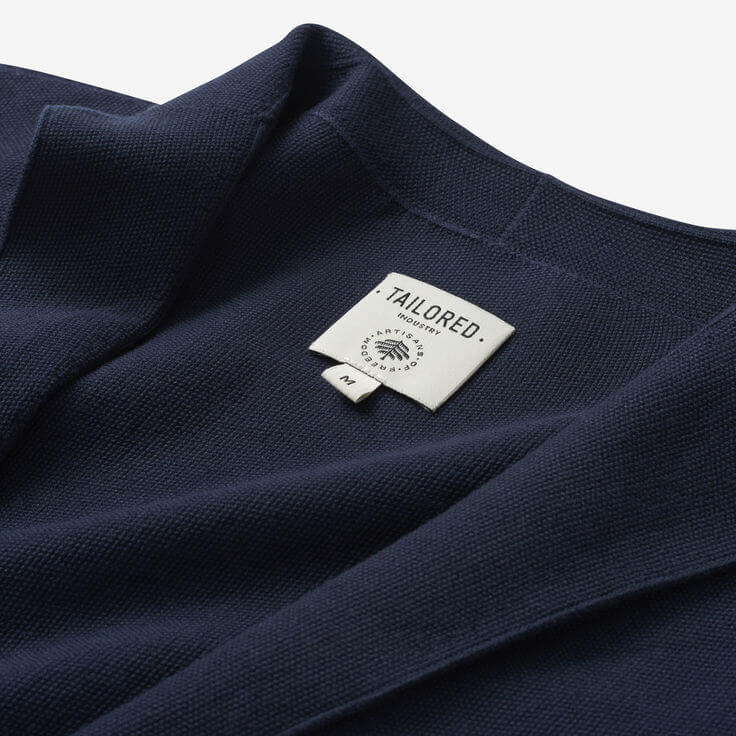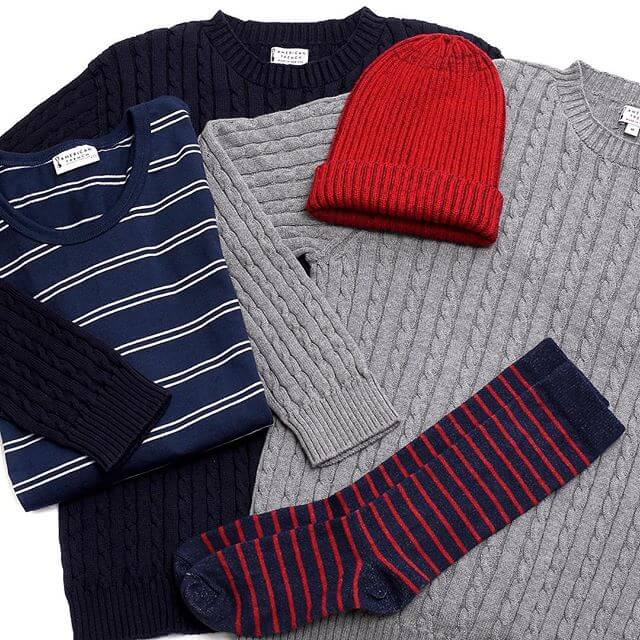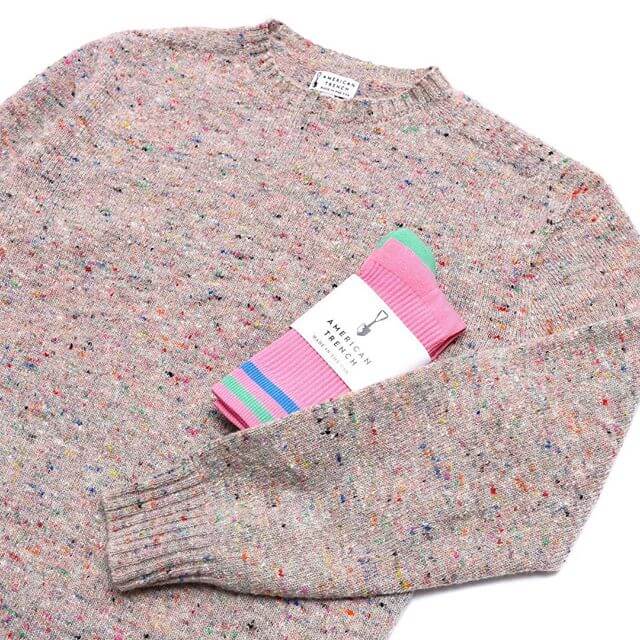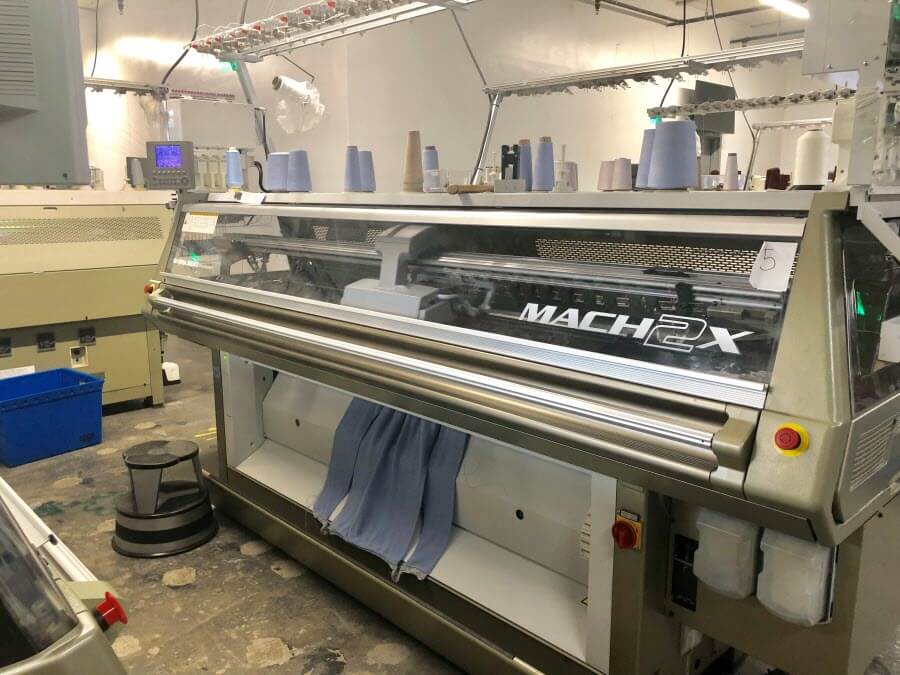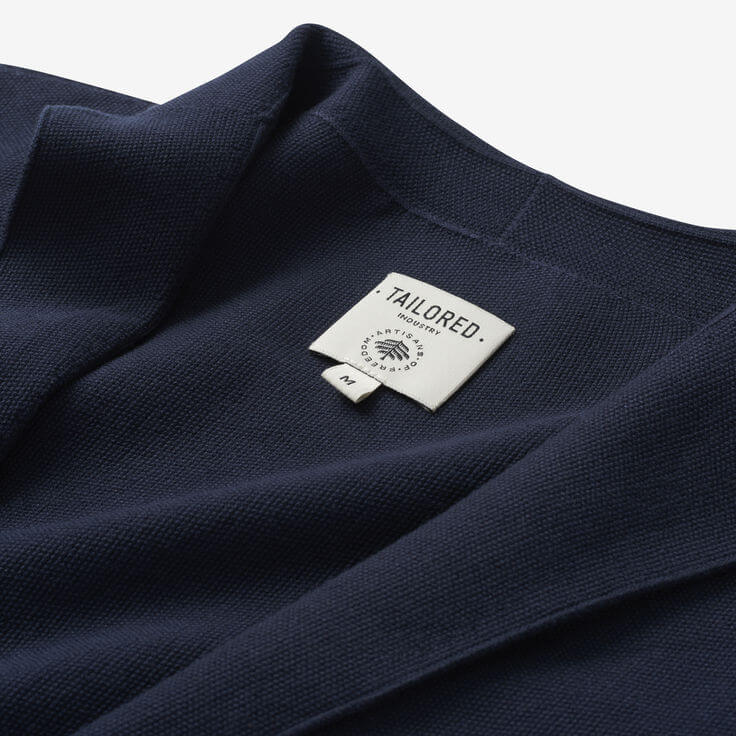CEO and co-founder of Tailored Industry, Alexander Tschopp, speaks to Jessica Owen about the company’s on-demand knitwear manufacturing model that is bringing the industry back to Brooklyn.
Just 25 years ago, Brooklyn, New York City, was the centre of knitwear manufacturing in the US. Yet through globalisation, the industry has moved overseas to take advantage of the cheap labour costs.
“There used to be around 150 knitting mills in a 40-block range of where we are located, it was a major hub for knitwear manufacturing. There were also mills in New Jersey and Connecticut, but this was the epicentre of knitwear production,” says Alexander Tschopp, CEO and co-founder of Tailored Industry.
“What we want to do is bring knitwear manufacturing back, not only to Brooklyn but throughout the US.”
With a degree from Cornell University in finance and entrepreneurship, Tschopp has been in the manufacturing business for around six years now.
“When I was an undergraduate, I started a small-batch manufacturing business where we produced sunglasses and sweaters for college book stores. In our first year, we had over 150 stores carrying our products. To avoid high minimum orders and reduce our inventory risk, we invested in manufacturing equipment from day one.
“When we started knitting our own sweaters in our facility in Brooklyn, fashion brands in Manhattan found out we had a knitting mill and our phone wouldn’t stop ringing with inquiries about contract manufacturing,” says Tschopp.
“This is when we realised there was a massive opportunity to bring knitwear manufacturing back. However, we quickly learned that the entire business model needed to change, from the equipment we had to the way we worked with brands.”
On-demand knitting
Tailored Industry uses an on-demand model that enables fashion brands to launch new products in one to three weeks and move into production with zero minimum order quantity. This production solution aims to precisely match supply with demand.
“We take a much different approach than most contract manufacturers,” says Tschopp. “First, we meet with a designer and showcase a bunch of styles to them that we have pre-designed in-house, based on the clients that we are trying to acquire.
“The clients can either use those styles exactly as they are and go into production straightaway, or they can use those styles as a starting point and make adjustments to them.”
This approach helps shorten the amount of time and money a brand usually spends in the development process.
For example, the company has recently been working with Allen Edmonds, an American shoe brand, and in less than a month an order was processed for over 1,000 units.
Tailored Industry creates garments using Shima Seiki’s WHOLEGARMENT knitting machines.
“You can construct the entire garment, three-dimensionally, right on the knitting machine,” says Tschopp. “This is really revolutionary when you can compare it to traditional methods.
By connecting these 3D knitting machines to our software platform, we are creating a new industrial sector that we call ‘manufacturing as a software-enabled service’.”
Reducing waste
Not only does Tailored Industry’s model and machinery reduce time and money for customers, but it also helps to reduce waste.
“Around 90% of apparel is produced using cut-and-sew methods and, as a result, there’s about 15% wastage per garment,” says Tschopp. “So, from the get-go you’re producing a lot of waste.
“The other problem with how the global supply chain works is that not only are brands forced into very long planning cycles, they are forced into really high minimum order quantities and they’re placing these orders based on a forecast.”
This method results in excess inventory, which is either burned, like the Burberry story in 2018, or the garments are heavily discounted.
“The EPA estimates that 10 million tons of apparel go into landfills every year,” says Tschopp. “The problem from a business perspective is that supply is not matching demand – there’s too much stuff for what people actually want to buy.
“What we are providing is a much better way to match supply with demand, by making what a brand needs, when they need it.”
Local production for local brands
The brands that Tailored Industry produces for are retailing products between US$250 and US$400 and aims them at the higher-end market, which includes contemporary and luxury brands.
The company produces knit garments ranging from sweaters to cardigans and to accessories such as knitted ties, scarves and gloves. For Allen Edmonds, one of the company’s creations included a men’s knitted blazer/sweater.
To make the garments, Tailored Industry purchases fully packaged yarns that are pre-dyed and work well with the knitting machines.
In terms of fibre content, the company works mainly with natural fibres, such as merino wool cashmere, merino-cashmere blends, cotton, cotton-cashmeres and sometimes works with viscose and polyester blends, too.
Although the company usually showcases pre-designed garments, there is the option for brands to have garments designed and made from scratch as well.
“Another brand we work with is MM.LaFleur; they are an NYC-based luxury womenswear company,” says explains. “Because the brand has a technical knitwear designer inhouse, she will submit styles that she wants us to programme from scratch.”
Tailored Industry currently has around 10 clients, all of which return to work with the company.
“We’re not really interested in working with clients for one-off production, but certain exceptions are made on a case-by-case basis. For example, we did a one-off project with Lexus, but we’re looking for clients who will run production with us season after season.”
At the moment, Tailored Industry is only working with brands in the US, particularly with those in New York City. Tailored also works with brands in Colorado and Philadelphia.
Building across the US
“We are confident that our model is the only way to bring production back to the US because it combines software with 3D manufacturing,” says Tschopp. “This approach allows us to leverage the automation our software platform provides to scale and allows the craft of apparel manufacturing to thrive, ultimately creating high-paying high-skilled American jobs.”
Tailored Industry is still a very young and relatively small company, it currently has 10 employees but has big dreams in sight.
“The biggest thing about what we’re doing is that we’re taking a software-defined approach and building up the production, so we’re a tech company as well as an advanced manufacturer,” he adds.
“The software we are building today is being implemented first at a small scale and then applied at a much larger scale next year when we build a factory with 100 machines.”
Once that plan is perfected, Tschopp says the plan is to build another nine locations across the US and to have a network of factories that in aggregate have 1,000 machines.
“The overall vision, operationally speaking, is to have 10 locations within the next five to seven years.”
Tschopp says the company is already having conversations with larger fashion houses including Gap Inc, Calares, Ralph Lauren, and Rag & Bone.
The aim is to start with very small test orders and then to have more robust conversations with these brands’ technology and operations teams to implement Tailored Industry’s on-demand and just-in-time services at a larger volume.
“Before we make the commitment for expansion, we want to know what the pipeline of orders will be,” says Tschopp.
For now, Tailored Industry is funded in several ways. From Tschopp’s network of investors, around US$1m has been raised to fund their growth. The company also has a venture capital firm in Palo Alto, California, which participated in a round of funding, in conjunction with around 30 angel investors from investment banking and private equity backgrounds.
Although Tailored Industry has been able to bring the money in, Tschopp explains that supply chain innovation as an investment strategy is still in its infancy. There is a process of showing investors that their business model is actually ‘asset-light’ and highly scalable.
“Because we’re a technology-enabled manufacturer, the investment community is becoming more interested in supply chain innovation and there’s a lot of talk around it,” he says. “But, for the most part, venture capital firms are a little weary of businesses that require capital expenditure investment to grow. However, we’re able to finance most expansion from cash generated from operations.”
Another large challenge for the business has been finding the right people to build out the expanding operations team.
“Once upon a time, people in this area would have had the skills to run knitting machines, but that’s not the case anymore,” says Tschopp.
“Finding the programmers, machine operators and finishers etc has been a challenge for us. But we are fortunate that we now have assembled an excellent team and a way to quickly train new workers.”
Going back to where it all began, Tschopp was first inspired by business when he was 14 years’ old when he read the biography of Andrew Carnegie, a Scottish-American industrialist who led the expansion of the American steel industry.
“The idea of building a business that has a very tangible presence was very appealing to me,” says Tschopp. “In Carnegie’s business, that meant providing steel to build railroads that connected the east coast to the west coast for the first time. For Tailored, we are building a network of factories throughout the country, that not only creates a sustainable supply chain, but provides a rewarding place for American workers to build American products from east to west.
Therefore, “the goal is really to bring manufacturing back, not just for the sake of it, but to connect the craft of making garments with the creative outlet of fashion that really has such a defining presence throughout American culture,” he says.
Have your say. Tweet and follow us @WTiNcomment

